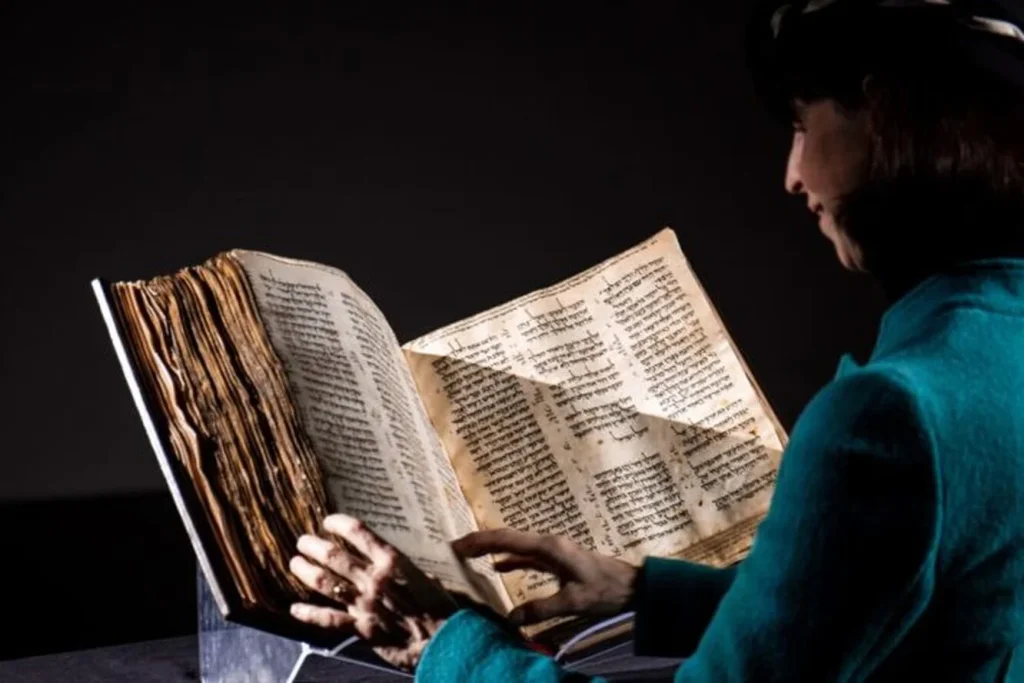In the Hebrew Bible, the term often translated as “witchcraft” or “sorcery” is “kashaph” (כָּשַׁף). This word is used in various passages to refer to practices associated with sorcery, magic, or divination. The term conveys the idea of using supernatural or occult means to gain power, knowledge, or control over natural and spiritual forces. It is generally used in a negative context, as these practices were often condemned in the Bible.
What is witchcraft in Hebrew?
In Hebrew culture, witchcraft is known as “keshef” or “keshafim.” It refers to the practice of using supernatural powers or magic for both benign and malevolent purposes. Witchcraft in Hebrew encompasses a wide range of practices, including divination, spellcasting, and the use of charms and potions. It is rooted in ancient beliefs and traditions that have been passed down through generations.
The term “keshef” is derived from the Hebrew word “kashaf,” which means to practice magic or to enchant. It is important to note that the concept of witchcraft in Hebrew is not solely associated with dark or evil forces. Historically, Hebrew society had both positive and negative views of witchcraft, recognizing its potential for healing and spiritual guidance as well as its potential for harm. Thus, the understanding of witchcraft in Hebrew is multifaceted and varies depending on the context and interpretation of the practices involved.
Understanding the Hebrew Term for Witchcraft
Witchcraft holds a prominent place in Hebrew culture, with the term for witchcraft being “keshef” in Hebrew. Understanding the Hebrew term for witchcraft can provide insight into its significance and historical context within Hebrew society. Moreover, it helps in exploring the different forms of witchcraft found in Hebrew texts and shedding light on the role of witchcraft in Hebrew folklore and mythology.
The Hebrew term “keshef” refers to the practice of sorcery or the use of magical powers. It encompasses a range of mystical practices, including the casting of spells, divination, and other supernatural acts. In Hebrew literature, references to witchcraft are often associated with the occult, as well as with acts of deception and manipulation. To understand the Hebrew term for witchcraft is to delve into a complex and intricate world of supernatural beliefs and practices that have woven themselves into the fabric of Hebrew society throughout history.


The Historical Context of Witchcraft in Hebrew Culture
Witchcraft holds a significant place in the historical context of Hebrew culture. Throughout the ages, the Hebrew people have been deeply influenced by the belief in supernatural forces and the practices of magic. Witchcraft, also known as “Kishuf” in Hebrew, has been an integral part of their cultural beliefs and traditions.
In ancient times, the Hebrews believed that witchcraft had the power to influence the natural order of things. It was perceived as a mysterious and potent force, capable of invoking blessings or curses in the lives of individuals and communities. Witchcraft was often associated with divination, spellcasting, and the ability to communicate with spirits and supernatural beings. The Hebrews held a complex view of witchcraft, respecting its power while also cautioning against its misuse. As a result, the historical context of witchcraft in Hebrew culture is a fascinating exploration of spirituality, superstition, and the search for hidden knowledge.
Significance of Witchcraft in Hebrew Literature
Witchcraft holds great significance in Hebrew literature, permeating numerous texts and stories. From ancient biblical narratives to medieval mystical writings, the portrayal of witchcraft serves as a powerful thematic element, highlighting the interplay between the supernatural realm and human existence.
In Hebrew literature, witchcraft languge often symbolizes the tension between good and evil, divine and demonic forces. It represents a source of power and knowledge that can be harnessed for both nefarious or redemptive purposes. The portrayal of witches and their craft allows Hebrew authors to explore the complexities of human nature, the consequences of moral choices, and the nature of divine intervention. Furthermore, through the lens of witchcraft, Hebrew literature delves into questions of fate, destiny, and the delicate balance between the physical and spiritual realms. By examining various perspectives on witchcraft, these texts offer readers a profound understanding of the human condition and the moral dilemmas faced by individuals in their quest for power and transcendence.
Exploring the Different Forms of Witchcraft in Hebrew Texts
In Hebrew texts, the exploration of witchcraft reveals a fascinating array of different forms and practices. One significant form is known as “keshef,” which refers to the use of spells and enchantments, often associated with the casting of harmful magic. Another form, “ov,” refers to the necromantic practice of summoning the spirits of the dead for divination purposes. The manipulation of curses and blessings, known as “qeshaphim” and “berakhot,” respectively, are also prevalent in Hebrew texts. These various forms of witchcraft provide unique insights into the belief systems and mystical practices of ancient Hebrew culture.
Additionally, Hebrew texts highlight the presence of Wiccan-like practices in the form of “kosem” and “me’onena.” The “kosem” was a male diviner who used various methods such as casting lots, interpreting dreams, and deciphering signs to gain insights into future events. On the other hand, the “me’onena” was a female diviner who would enter into a trance-like state to communicate with the spiritual realm and provide wisdom and guidance. These practices demonstrate the diversity of witchcraft within Hebrew texts and shed light on the significant role these mystical figures played in Hebrew society.
As we delve further into the exploration of the different forms of witchcraft in Hebrew texts, it becomes clear that these practices were deeply rooted in the cultural and religious fabric of society. The documentation of these forms of witchcraft not only provides us with a glimpse into the mystical beliefs of ancient Hebrew culture but also serves as a testament to the complexity and rich tapestry of their views on magic and the supernatural. By studying these diverse forms of witchcraft, we gain a deeper understanding of the cultural nuances and perceptions surrounding witchcraft in Hebrew society.
The Role of Witchcraft in Hebrew Folklore and Mythology
Witchcraft holds a significant place in Hebrew folklore and mythology, acting as a powerful symbol and catalyst for various narratives and cultural beliefs. Within these tales, the concept of witchcraft often intertwines with other mystical elements, creating a rich tapestry of magical practices and supernatural occurrences.
One prevalent theme that emerges is the ability of witches to communicate and interact with otherworldly beings. This connection showcases their elevated status and heightened spiritual awareness, positioning them as intermediaries between humans and the divine. In some stories, witches utilize their magical abilities to summon and command spirits, allowing them to tap into hidden knowledge and orchestrate supernatural events. This association with the spiritual realm adds an air of mystery and intrigue to the figure of the witch, further accentuating their revered role in Hebrew folklore and mythology.
The Cultural Perception of Witchcraft in Hebrew Society
The cultural perception of witchcraft in Hebrew society is a complex and multifaceted subject that has evolved over time. In ancient Hebrew culture, witchcraft was generally viewed with fear and suspicion. It was seen as a dark and forbidden practice, often associated with evil spirits and demonic forces. This negative perception stemmed from the religious beliefs and values of the Hebrew people, who considered witchcraft to be a form of idolatry and a violation of their covenant with God.
However, it is important to note that the cultural perception of witchcraft in Hebrew society was not always uniformly negative. In some cases, particularly in ancient Hebrew literature, certain forms of witchcraft were portrayed in a more positive light. For example, the use of divination and prophecy by individuals like the biblical figure of Samuel was considered a legitimate and respected form of witchcraft. These individuals were regarded as having a special connection with the divine and were seen as intermediaries between God and the human realm. Overall, the cultural perception of witchcraft in Hebrew society varied depending on the specific context and beliefs of the individuals and communities involved.
sources: https://www.jewishencyclopedia.com/articles/14960-witchcraft


Pingback: Hebrew Word For Witchcraft | Witchcraft | Scoo...